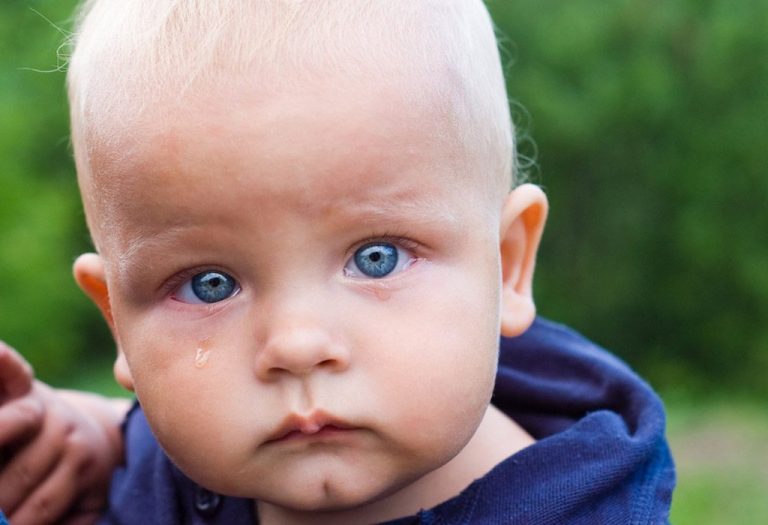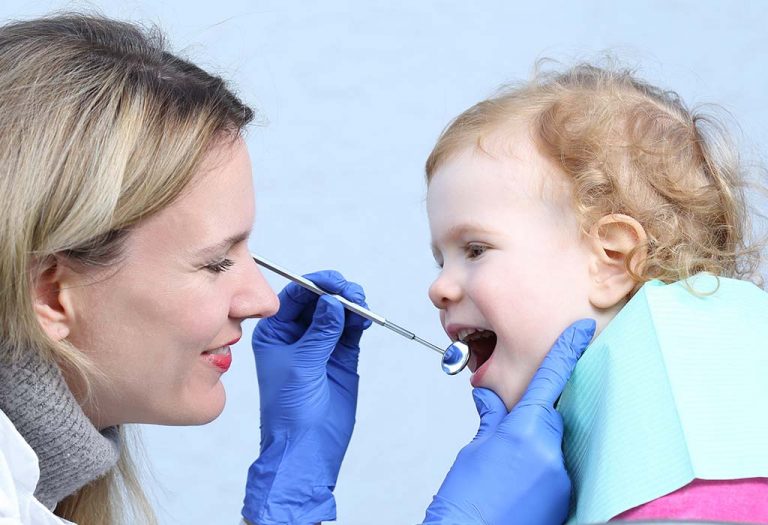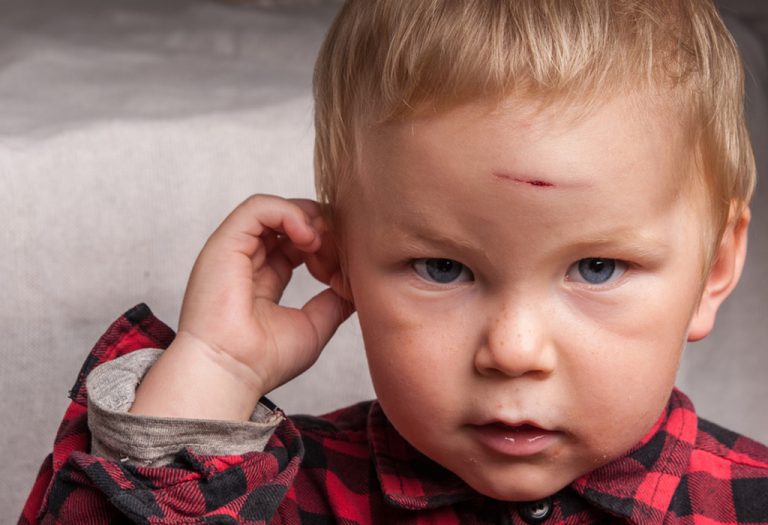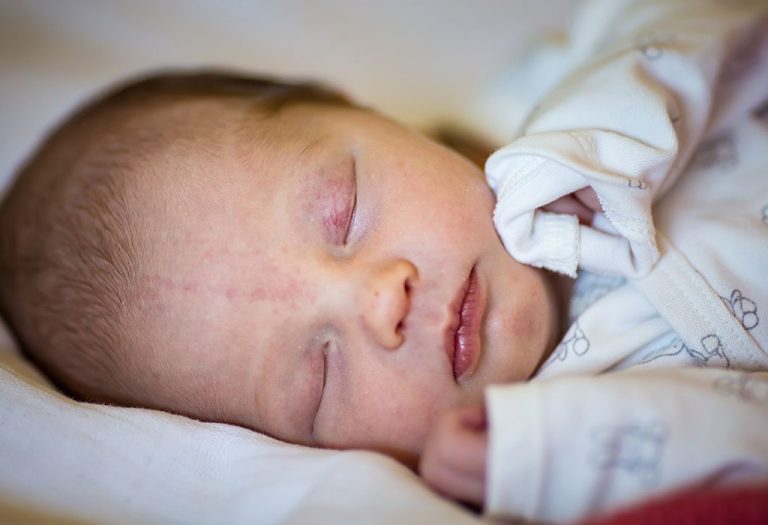Watery Eyes in Babies – Causes, Risks and Prevention

If you notice that your child has watery eyes, it could be due to several reasons. Epiphora or having watery eyes is a common condition in babies and fortunately, it is harmless. It could be caused because of blocked tear ducts, infections, or allergies. As a parent, you must ensure that your baby’s eyes stay clean and healthy in the meantime. However, in a few instances, symptoms associated with watery eyes might indicate serious complications. And one must consult a paediatrician. This article will help you understand the causes, treatments, and risks related to watery eyes in babies.
What Does It Mean If Your Infant Has Watery Eyes?
If your baby has watery eyes (or the condition epiphora), then his eyes must be watering (or secreting tears) constantly or in excess amounts. Occasionally, you might see tears running down his face as well. This condition could have been triggered by an allergic reaction, infections, or blocked tear ducts.
Causes of Watery Eyes in Babies
Although epiphora is not that serious and it passes on its own. Sometimes, it can also indicate numerous medical conditions. Here are a few of the most common reasons for watery eyes in babies.
1. Overproduction of Tears
Eye irritation is often responsible for the secretion of excessive tears from the eyes in order to wash the irritant out. Eye irritants include smoke, dust, pollen, dirt, sand, and so on. Also, conditions like conjunctivitis, trichiasis, and ectropion can irritate your baby’s eyes. Ensure that your baby does not rub his eyes too much as this could worsen the inflammation and lead to a burning sensation.
2. Infections
Infections such as pink eye can also lead to epiphora in infants. It can be caused by virus, fungi, bacteria or even allergies. Pink eye occurs when a virus (or bacteria, though less common) gets into the eye. This condition is extremely contagious and can spread to others in your family if precautions are not taken. Another infection is blepharitis, which results due to blockage of the sebum glands under the eyes. These infections can lead to severe symptoms such as swelling, burning, soreness, and loss of eyelashes in extreme cases.
3. Blocked Tear Ducts
Your baby may also have watery eyes because of a blocked tear duct. The tear ducts are responsible for draining the fluid from the eyes so that they do not accumulate. However, if your baby’s tear ducts are blocked, the drainage system may malfunction, causing the tears to collect in your baby’s eyes and slowly stream down his face. You might also observe white discharge, redness, or swelling on the upper corners of your child’s nose.
4. Allergies
Your baby may also have watery or red eyes because of allergic conjunctivitis. Hay fever, also known as allergic rhinitis, can also cause an allergic reaction in the eye, which may make his eyes water. Some symptoms of allergic rhinitis include runny nose, sneezing, nasal congestion, etc. Watch out for these symptoms and take your child to a doctor immediately.
Risks of Watery Eyes
Understanding the risks associated with watery eyes in babies can help parents take timely action to protect their baby’s eye health and overall well-being. Here are some potential risks:
- Blocked tear ducts: A common condition in newborns, it can cause persistent watery eyes and increase the risk of infections if untreated.
- Eye infections (conjunctivitis): Excess tearing might be a symptom of an eye infection, leading to redness, swelling, and discomfort.
- Allergic reactions: Allergies to dust, pollen, or certain substances can trigger watery eyes, accompanied by itching and irritation.
- Congenital abnormalities: Rare structural issues with the tear ducts or eyelids can cause excessive tearing and may require medical intervention.
- Foreign particles in the eye: Dust, debris, or small objects can irritate the eye and lead to excessive tearing as the body tries to flush them out.
- Eye strain or vision problems: Conditions like strabismus or farsightedness might result in watery eyes as the baby struggles to focus.
- Dry eye syndrome: Ironically, excessive tearing can sometimes be a sign of dry eyes, where the body overcompensates by producing more tears.
Treatment
Here are some treatment options available to get rid of watery eyes during this time.
- If the condition is not that severe, all you can do is wait and watch for it to treat on its own.
- Clean your baby’s eyes with cotton and filtered water to prevent the accumulation of any discharge as it could lead to infections.
- Massage the tear duct a few times a day using mild pressure; it will help release any clogging, allowing the duct to develop fully. This method is known as milking.
- Using antibiotic eye medications can also help relieve the symptoms that might be caused due to infections.
- Use eye drops containing antihistamines to combat the symptoms of allergic reactions.
- Washing your baby’s eyes out under the guidance of a paediatric ophthalmologist to remove any irritants.
- If a virus causes watery eyes, you might have to wait for around a week to see if it goes away. If it does not, please consult your child’s paediatrician immediately.
Should You Opt for Home Remedies for Epiphora?
You may consider home remedies for watery eyes in your baby if your doctor gives a go-ahead or if your child’s eyes though watering, are white and not irritated. If your child’s eyes are watering because of a blocked tear duct, he will suggest that you massage your baby’s eyes to help open it. Treatment of watery eyes in infants can be done at home as well to ease the discomfort experienced by your child. You can also try cold and warm compresses to ease the tear duct blockage and to remove the toxic crust accumulating around the eyes. You can also use a warm teabag to soothe eye inflammation and soreness. Chamomile and peppermint show the best results when treating epiphora.
Prevention of Watery Eyes in Babies
Preventing watery eyes in babies involves maintaining good hygiene and addressing any potential irritants or health concerns promptly. By taking preventive measures, parents can help keep their baby’s eyes healthy and avoid complications.
1. Maintain Proper Eye Hygiene
Clean your baby’s eyes gently with a soft, damp cloth to remove any debris or discharge. Always use clean, sterilized materials to prevent introducing bacteria to the eye area.
2. Protect from Environmental Irritants
Minimize your baby’s exposure to dust, smoke, and allergens that could irritate their eyes. Use a humidifier in the room to prevent dry air, which can exacerbate eye issues.
3. Regular Health Checkups
Schedule routine pediatric visits to monitor your baby’s overall health, including eye care. Consult a doctor immediately if you notice persistent tearing or redness in the eyes.
When to Visit a Doctor
If you notice your baby’s eye watering, but his eyeballs look clear and white, and if they do not exhibit any signs of discomfort, you can care for them at home, but if you observe any of the following symptoms, please visit your paediatrician immediately.
- Inflammation or redness in or around the eyes.
- The yellowish-green secretion that forms hard crusts around the eyes.
- Your infant continually rubs his eyes or shows discomfort.
- Your baby is sensitive to light and prefers to keep his eyes closed.
- The shape of your baby’s eyelids is not how it is supposed to be.
FAQs
1. Can teething cause watery eyes in babies?
Yes, teething can sometimes lead to watery eyes in babies due to the pressure on facial nerves, which can temporarily affect the tear ducts. However, this is usually mild and resolves as teething progresses.
2. Can watery eyes in babies affect their vision?
In most cases, watery eyes do not impact a baby’s vision. However, if caused by infections or structural abnormalities, it may require treatment to avoid long-term effects on vision development.
3. Are watery eyes more common in premature babies?
Yes, premature babies are more likely to have underdeveloped tear ducts, making them prone to watery eyes. This condition typically improves as they grow and their tear ducts mature.
This was all about eye watering in infants. Epiphora is a common condition in babies, so you do not need to concern yourself. However, if there is more water than normal in conjunction with other symptoms, please consult with your baby’s doctor, who will perform a detailed examination and suggest possible treatment options. Make sure you follow the paediatrician’s instructions to the letter and take care of your baby well. He will soon feel better!
References/Resources:
1 Allergies in Ciildren; American College of Allergy, Asthma & Immunology; https://acaai.org/allergies/allergies-101/who-gets-allergies/children/
2. Water Eyes Causes; Mayo Clinic; https://www.mayoclinic.org/symptoms/watery-eyes/basics/causes/sym-20050821
3. Makker. K, Nassar. G, Kaufman. E; Neonatal Conjunctivitis; National Library of Medicines; https://www.ncbi.nlm.nih.gov/books/NBK441840/
4. Epiphora (Watery Eyes); Cleveland Clinic; https://my.clevelandclinic.org/health/diseases/17944-epiphora-watery-eyes
5. Fungal Eye Infections Basics; CDC; https://www.cdc.gov/fungal-eye-infections/about/index.html
6. Could Your Watery Eyes Be a Sign of a Blocked Tear Duct?; Massachusetts Eye and Ear (Harvard Medical School Teaching Hospital); https://focus.masseyeandear.org/could-your-watery-eyes-be-a-sign-of-a-blocked-tear-duct/
7. Blocked Tear Ducts; C.S. Mott Children’s Hospital; https://www.mottchildren.org/health-library/hw3084
Also Read:
Eye Problems in Babies
Eye Infection in Babies
Sticky or Watery Eyes in Babies
Dark Circles Under Baby’s Eyes
Baby Eye Color: When Does it Change and More
Was This Article Helpful?
Parenting is a huge responsibility, for you as a caregiver, but also for us as a parenting content platform. We understand that and take our responsibility of creating credible content seriously. FirstCry Parenting articles are written and published only after extensive research using factually sound references to deliver quality content that is accurate, validated by experts, and completely reliable. To understand how we go about creating content that is credible, read our editorial policy here.

























